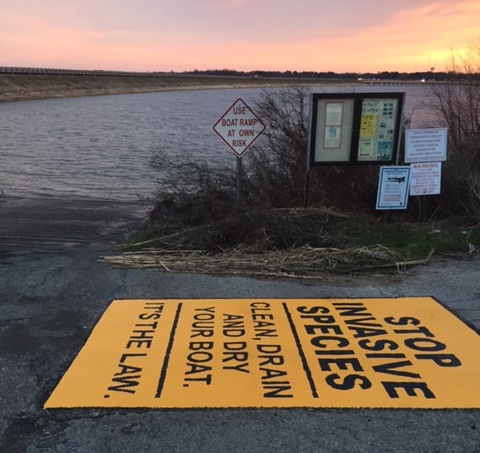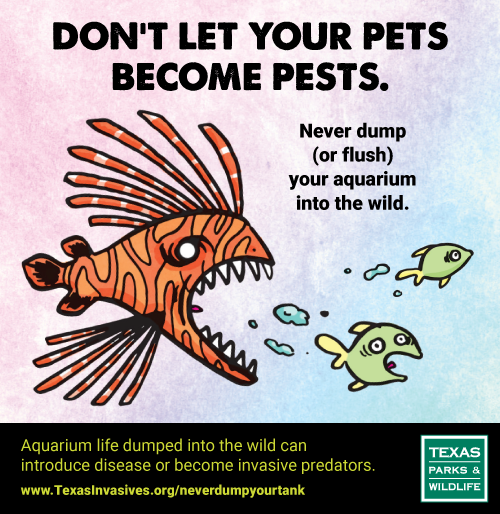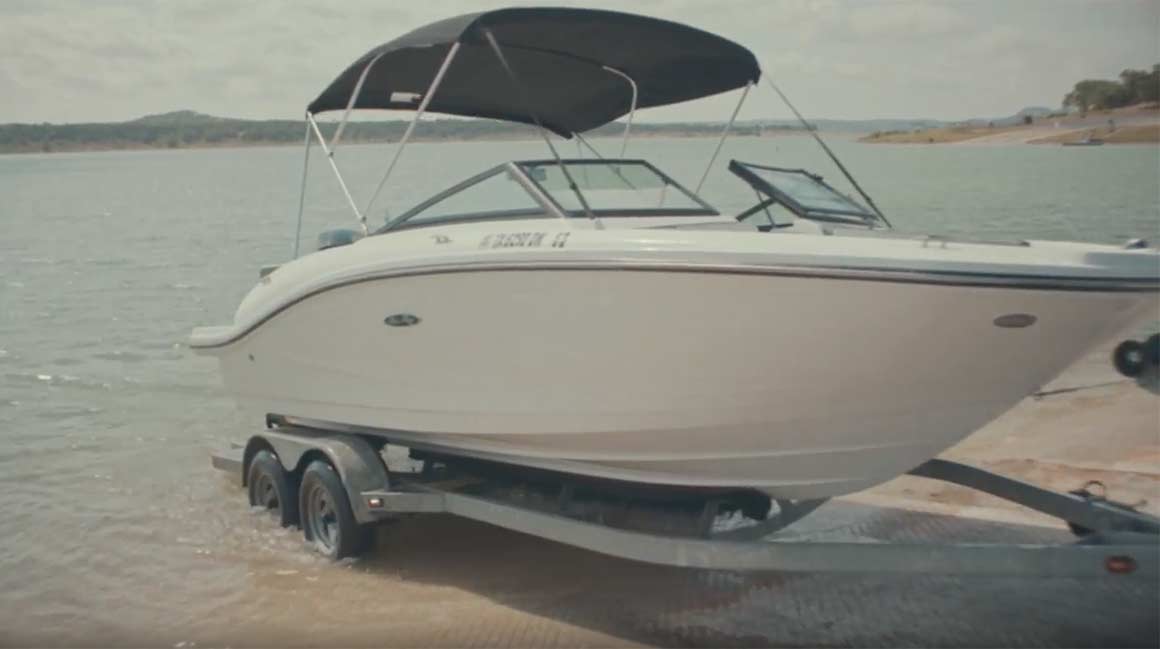Outreach and Prevention
“Protect the Lakes You Love” Public Awareness Campaign
Boaters have an important role to play in stemming the spread of destructive invasive species that can hitch a ride and spread to another lake and have devastating recreational, environmental and economic impacts. The “Protect the Lakes You Love” public awareness campaign aims to slow or stop the spread of harmful invasive species such as giant salvinia and zebra mussels by reaching boaters at highest risk for transporting invasive species with messages aimed at motivating them to clean, drain and dry their boat, trailer and gear before traveling from lake to lake.
Paid media for the campaign is executed each summer, primarily between Memorial Day and Labor Day when most boaters are on the water. Advertising and outreach has included billboards, pumptopper advertising at gas stations, gas station TV advertising, geo-targeted and contextually-targeted digital banner ads and pre-roll video ads, paid social media ads on Facebook and Instagram, and digital radio ads on Pandora. The campaign also includes outreach to boaters through tactics such as email blasts, inserts in boat registration mailings, boat ramp signage, earned print ads and editorial in relevant publications, outreach materials, and organic social media.
Signage
Signs to inform boaters of the need to clean, drain, and dry their boats are installed on the surface of boat ramps on lakes with or at high risk for getting invasive species. These signs are cleaned regularly to maximize visibility to boaters visiting the lake.
The Texas Parks and Wildlife Department also provides 32"x24" boat ramp signs to partners and controlling authorities on lakes that have invasive mussels or giant salvinia.
With an eye toward preventing new infestations, TPWD works with partners and controlling authorities on additional sign designs as needed. For example, the Department has provided signs for:
- Areas with motorized boat traffic - PDF
- Areas for kayaks, canoes and bank fishers - PDF
- Waterways used for waterfowl hunting - PDF
Signage has been provided to all inland Texas Paddling Trails for display at informational kiosks.
Need signs? Email our Marketing Department.

“Never Dump Your Tank” Public Awareness Campaign
The “Never Dump Your Tank” public awareness campaign seeks to motivate aquarium owners to dispose of any unwanted aquarium fish, plants or animals in a safe, responsible, and humane fashion rather than releasing them. The campaign’s message, “Never Dump Your Tank” is a reminder to aquarium owners that dumping anything out of an aquarium—fish, animals, or plants—can have devastating consequences for Texas' natural waterbodies. This is true for both freshwater and saltwater aquariums. This awareness campaign uses Facebook and Instagram video advertising to key target audiences such as aquarium hobbyists. The digital advertising campaign is supplemented with social media, posters for schools and aquarium shops, e-banners in boating and fishing-related emails and e-newsletters.
Learn more about alternatives to releasing unwanted aquarium life.

Invasive Carp Public Awareness Efforts
Invasive carp public awareness efforts seek to inform anglers of the risks of transferring live bait from waters where invasive carp have been found to other water bodies where they may cause harm. Young invasive carp can be easily mistaken for shad and transferred to new water bodies. Campaign efforts to increase angler awareness include signage at public access points, direct emails to anglers in target areas, and social media outreach.
Supporting Partners
The aquatic invasive species outreach and prevention campaign in Texas is supported, in part, by these partners: North Texas Municipal Water District, Tarrant Regional Water District, City of Dallas Water Utilities Department, Trinity River Authority, San Jacinto River Authority, Sabine River Authority, City of Houston, Brazos River Authority, Guadalupe-Blanco River Authority, Lower Colorado River Authority, Coastal Water Authority, Upper Trinity Regional Water District, San Antonio River Authority
Learn More
- Stop the Spread of Zebra Mussels
- Stop the Spread of Giant Salvinia
- Stop Invasives: Clean, Drain, and Dry
- How to Clean, Drain and Dry Your Boat - Video
- Radio Public Service Announcement - 975 KB
- "Lake Dudes" - Playlist of Videos
- "Lake Dudes" Radio Public Service Announcement - 1.2 MB
- Resources for Marinas and Boat Owners
- Request Informational Materials
- Never Dump Your Tank

